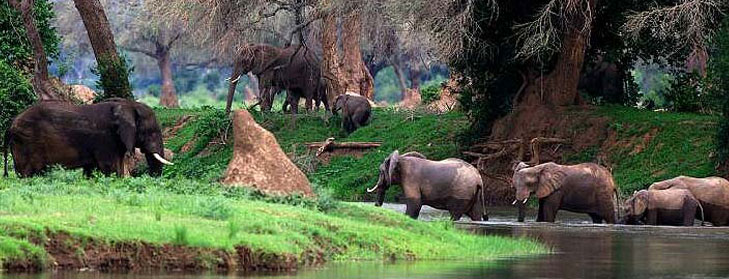Makgadikgadi Pans
Three hundred kilomeres south of the Chobe National Park, near the eastern boundary with Zimbabwe, lies the wide expanse of the Makgadikgadi salt pans. Covering 12 000 square kilometres, it dwards Namibia's famed Etosha Pan which is only 4 500 square kilometres, and is the largest salt pan in the world. The Makgadikgadi consists of two major pans: Sowa (meaning 'salt' in one of the San languages) and Ntwetwe, plus a scattering of smaller pans. Nxai Pan was once part of Lake Makgadikgadi, but when the lake dried up it became one of the smaller, isolated lakes left behind. Much evidence of the changes to Botswana's water systems over the millennia are buried under the sands of the Kalahari. These pans were once a huge lake, thought to have been filled by the Zambezi, Okavango and Chobe Rivers. At its largest, Lake Makgadikgadi used to cover an enormous 80 000 square kilometres with a depth of up to 30 metres. The formation of various faults diverted rivers, contributing to the drying-up process, and gradually the lake began to shrink.
The shimmering salt pans of Makgadikgadi along with the Nxai Pans are believed to be the largest in the world. Most of the time they appear as glaring, white, endless plains. During the rainy season they are one of the most important wetland areas in Botswana - when they transform and come alive into stunning grass-plains.
Makgadikgadi Pans is situated directly between Maun and Francistown. When it rain, the pans come to life with water birds and great herds of game. The Makgadikgadi pans are the remains of a once ancient lake and now form part of the route of Southern Africa's largest remaining migration. Travellers can expect something slightly unusual from this part of Botswana. Kubu Island, with its huge baobas, is one of the most mysterious places of the Makgadikgadi Pans.







